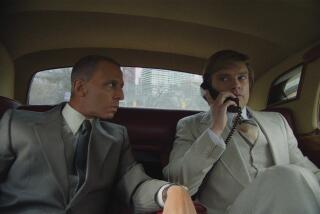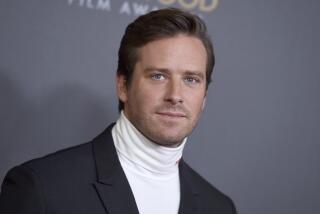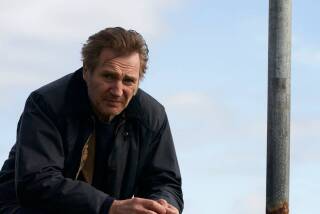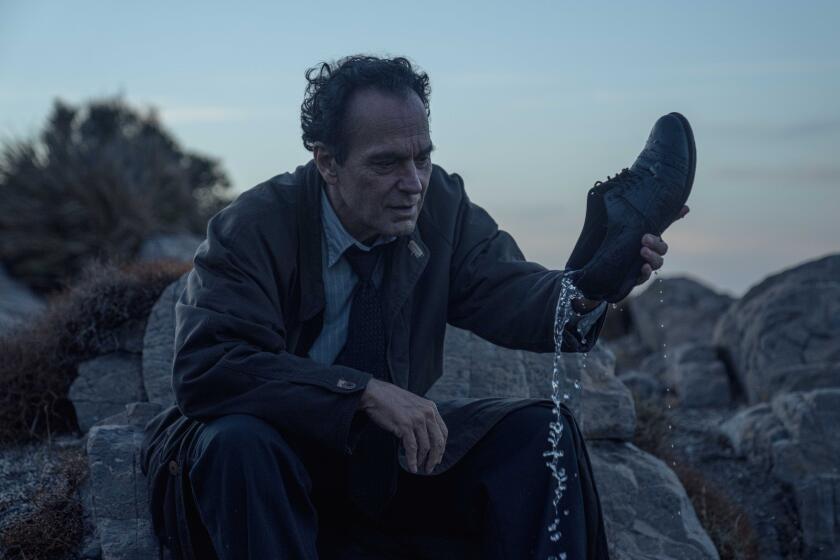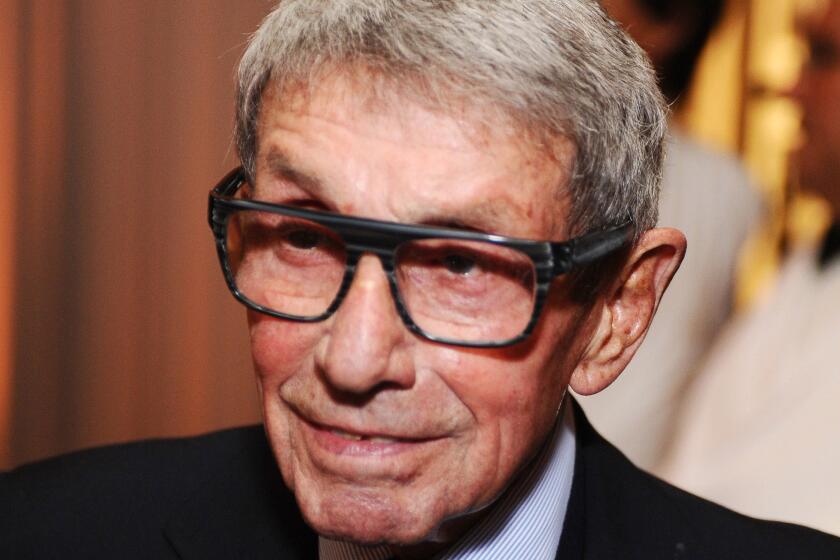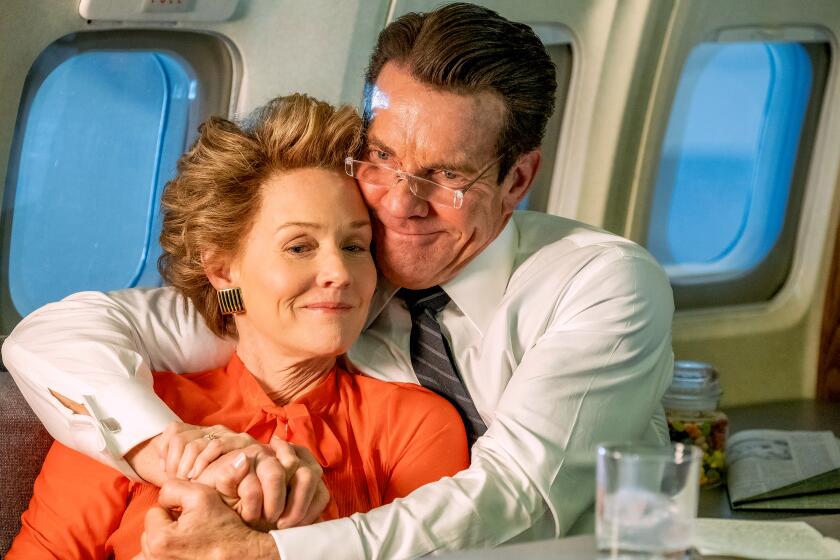A look inside Hollywood and the movies : ‘THE FUGITIVE,’ KIND OF : Dr. Richard Kimble, Meet Dr. Sam Sheppard
Roy Huggins wants to set the record straight. Dr. Richard Kimble--a.k.a. “The Fugitive”--is not based on the real-life sensational Cleveland murder case involving Dr. Sam Sheppard, who was convicted in 1954 of killing his wife but was later retried and set free in 1966.
As creator of the popular 1960s TV series that in turn spawned the current blockbuster movie starring Harrison Ford, Huggins is a little put out that others are determined to find a factual hook for his ever-more-famous character when there was none.
Not only do others from the era who are familiar with the case remember differently, news reports have linked the two stories as if fact.
But “The Fugitive,” Huggins insists, was inspired by an idea to do a series about Western heroes and drifters and then contemporized for the growing television audience of the 1960s. To heighten dramatic effect, the protagonist was made a fugitive of a capital crime--murder. And by making him a doctor, Huggins said the character would be even more credible because doctors are trained to be disciplined and fast on their feet, at the very least.
“I suppose connecting Kimble to Sheppard makes a more sensational story,” Huggins said. “I wouldn’t care as much . . . except that’s not the way (“The Fugitive”) happened. (The news reports) are in reckless disregard of the truth.”
The thing is . . . F. Lee Bailey, the flamboyant attorney who successfully defended Sheppard during his retrial, and Daniel Melnick, the ABC programming executive (now independent movie producer) who brought Huggins’ series idea to the attention of the network’s then-president Leonard Goldenson back in the early 1960s, each say their recollections are contrary to the creators’.
“There was never any doubt when Dr. Richard Kimble was running around on TV, he was inspired by the Sheppard case. In 1965, no one would have dared argued the point,” Bailey said in a telephone interview from his Boston law offices.
“There’s no question about it . . . Roy’s inspiration was the Sam Sheppard case,” said Melnick, who was also producing a talk show with Bailey at the time.
If everyone agrees on anything, it’s the parallel stories--coincidental or not.
Dr. Sam Sheppard was an osteopath convicted in 1954 of murdering his wife, Marilyn, who he claimed was bludgeoned to death by a “bushy-haired intruder.” Professing innocence, Sheppard nevertheless received a life sentence, served 10 years, but later was successful in obtaining release when the U.S. Supreme Court overturned the verdict. The trial proceedings, the high court said, were carried out in “a carnival atmosphere”--a flurry of publicity accompanied the arrest and trial--coloring its outcome. (This Supreme Court test is now a standard for determining a change of trial venue in notorious cases.)
In the TV series that ran from 1963-67, Dr. Richard Kimble (played by David Janssen), wrongly convicted of his wife’s death, escaped the death sentence when the train he was being transported on was derailed and he began his life on the run. Kimble’s defense was that his wife’s killer was a one-armed man.
In Sheppard’s case, he never escaped and no murderer was ever caught. In fictional Kimble’s case--TV show and movie adaptation--both occur. The final episode of the series remains one of the highest-rated in television history while the Warner Bros. movie has become the summer’s third highest-grossing feature after “Jurassic Park” and “The Firm.”
Huggins points to the fact that while the Sheppard trial was a cause celebre in Cleveland, it never made news in California where he would read or hear about it. Bailey counters that he made it news by getting the Supreme Court to take up the case in 1962--and Bailey is widely known to be his own best promoter. Bailey further argues that “The Fugitive” went off the air following Sheppard’s acquittal: “You can’t perpetuate a mystery after reality says ‘it’s over.’ ”
Still, Huggins isn’t the only one who decries the connection.
Fred Drenkhan, the arresting officer on Ohio’s Bay Village police force who brought Sheppard in, finds only “a very thin link” between the two stories.
“Listen, there were other stories linking Sheppard to the Mafia and the killing of Jimmy Hoffa. Then there was the one saying the American Medical Assn. framed him because they didn’t want to admit osteopaths to the organization at that time. You heard all kinds of strange things. . .it’s hard for me to even remember them all.”
More to Read
Only good movies
Get the Indie Focus newsletter, Mark Olsen's weekly guide to the world of cinema.
You may occasionally receive promotional content from the Los Angeles Times.
